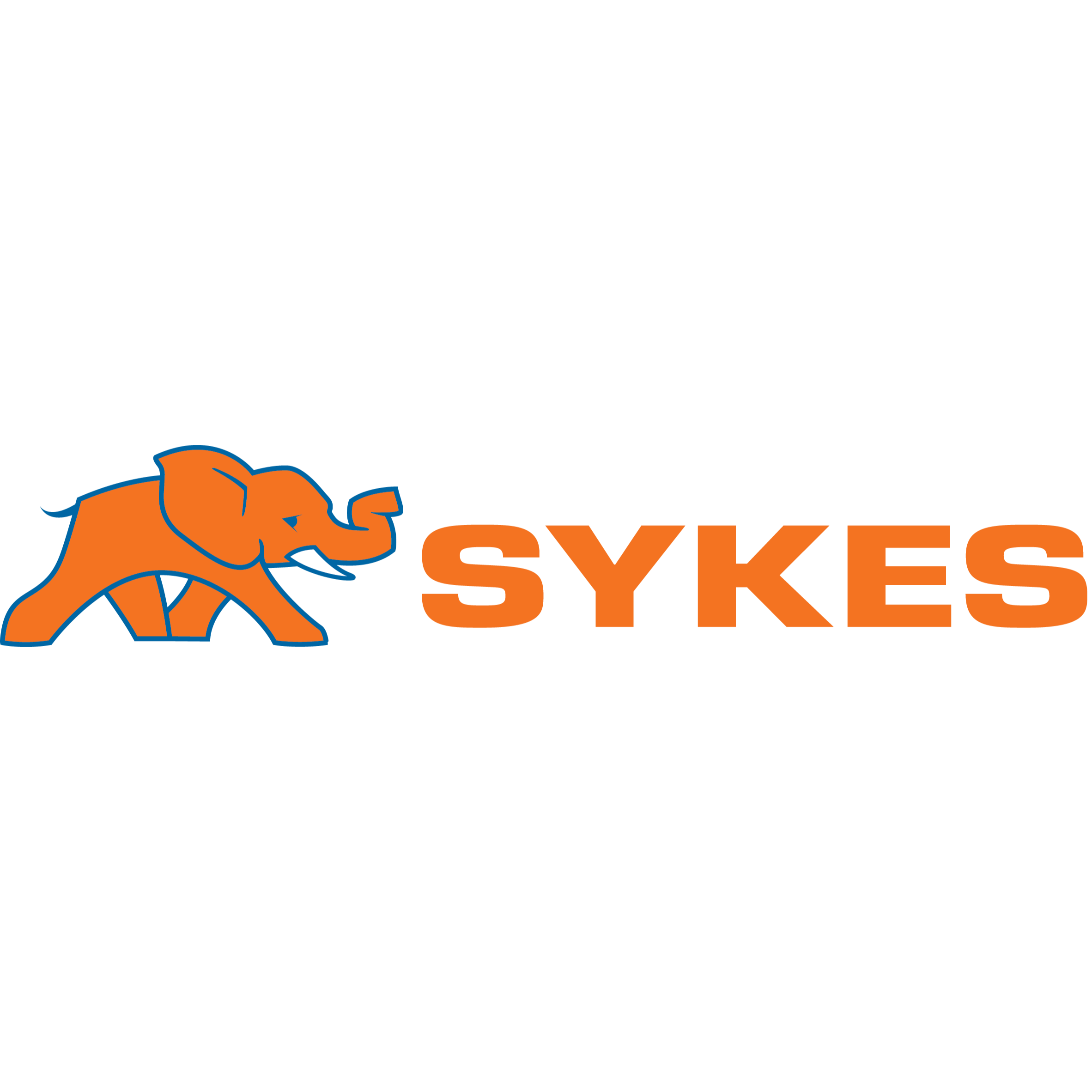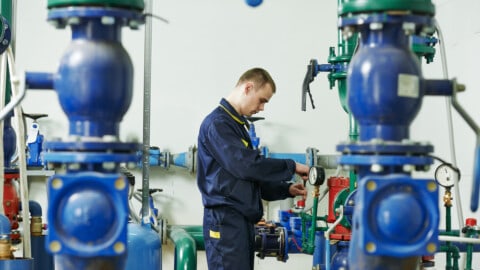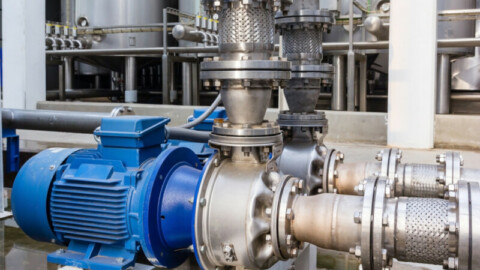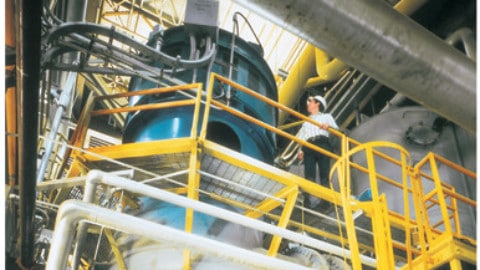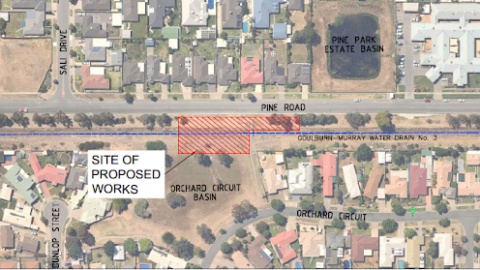The PIA’s Australian Pump Technical Handbook is a cornerstone text for the Australian pump industry and, in our opinion, a must have for anyone who deals with pumps on a regular basis. In this ongoing series, we feature abridged chapters from the classic book to showcase the various areas covered and to reacquaint readers with the technical aspects of pumps. In this issue, we look at efficient operations of pump systems.
With an increasing focus on the reduction of greenhouse gas emissions, Australian industry is endeavouring to reduce power consumption, including where plants are required to operate for long periods of time at high levels of demand.
Pumping equipment can be considered a significant consumer of power and the global industry has been endeavouring to design better products and more innovative systems to address this issue. In order to maximise energy efficiency in pumping systems, it is necessary to consider the complete pumping system. This means from the initial source of the fluid, through the pump and its control system to where it is finally discharged.
Since system performance can also change with time, how the system is maintained can have an important bearing in the long-term efficiency of the total installation.
While there are a number of ways in which one can approach these issues, it can be looked at in five simple steps and provide guidelines on how practices can be applied to minimise energy consumption.
These steps include:
- Losses in pumps, both centrifugal and positive displacement
- Losses in systems and how these can be minimised
- Matching a pump to the system requirements
- Drive considerations – starting and speed control systems
- Lifecycle costs
The key to an efficient pumping system is to select the most appropriate pump for the specified application and operating conditions.
It is advised the user spend as much time as possible defining the conditions of service that a particular application will generate. If these are known, it is possible to provide users with a recommended solution that best meets the needs of the application.
Teamwork achieves the best outcome and a dialogue between the pump supplier and the pump user has generally led to better outcomes in plant design.
Pump efficiency
While the main focus of this section is on centrifugal pumps, similar considerations would apply to positive displacement pumps.
Positive displacement pumps are normally used for liquids with high viscosity, low flow and high pressure, or where an accurate flow rate is required for every pump revolution.
The efficiency of positive displacement pumps is dependent on a determination of internal friction and leakage losses. Friction losses in the system depend on the rate of flow, whether it is constant or pulsating, and the characteristics of the fluid being pumped.
Efficiency measurement for rotodynamic pumps
There are many different types of pumps on the market and, while just a small number of these are in common use, it is important to understand the significance of the performance information that the manufacturer supplies, which allows for the selection of the most suitable pump for an application.
Pump efficiency is measured by testing the product in controlled conditions with accurately calibrated instrumentation. In Australia, AS/ISO 9906:2018 is the standard by which rotodynamic pumps should be tested. However, the test data which measures flow, head, power absorbed and rotational speed is then used to calculate pump efficiency. Which grade of testing applies to the data would normally be shown on the performance curve and this implies the tolerance level that will apply to pump efficiency.
A pump is selected based on a nominated duty point, and the manufacturer’s performance data should be used to select the pump as well as to determine the operating efficiency and power absorbed. The question becomes “how accurate is the performance data provided?”.
If a user wishes to have a higher level of accuracy for pump performance data, then it is prudent to deal with the manufacturer directly and obtain a performance guarantee based on an objective assessment of all the conditions of service.
However, it should be noted that most standard pumps (e.g. ISO 2858 end suction pumps) are selected based on published curves in catalogues. In such cases, the test standard allows for extra wide tolerances for flow, head and efficiency to be applied.
Losses in rotodynamic pumps
While it is important to know the overall efficiency of a pump, it can also be helpful to understand what contributes to the inefficiency of the pump. Is it poor design? Is it poor manufacture? What can be done to get a better outcome? These are often questions that can best be answered by looking at the losses which occur inside a pump.
These fall into two basic categories:
- Hydrodynamic losses – entry and exit shock losses, losses through the impeller, disk friction losses, leakage losses
- Mechanical losses – friction in bearings and at the seal etc.
The relative significance of these two categories often relates to the pump design, the speed of operation and the duty the pump is selected to satisfy.
There is also a relationship between pump efficiency and specific speed.
Earlier work on rotodynamic pumps idicates that mechanical losses are relatively constant across the specific speed range, but the main variables are:
- Disk friction losses – high in pumps with low specific speeds. Radial impellers have a relatively large diameter and small width
- Leakage losses – higher in pumps with low specific speed, especially when seal ring clearances are increased to prevent galling in pumps with hard materials for casing and impeller
- Casing friction losses – these are higher at higher specific speeds and relate to the velocity over the internal surface of the casing. Friction losses are proportional to the velocity squared
Further information and detailed diagrams, equations and schematics can be found in the Australian Pump Technical Handbook, available from the PIA website. In the next edition of Pump Industry, we will continue to look at the efficient operation of pump systems.




